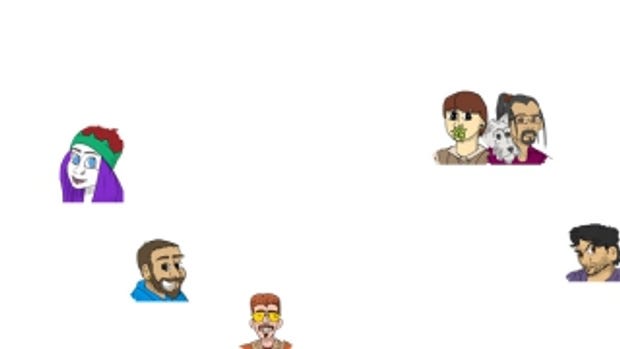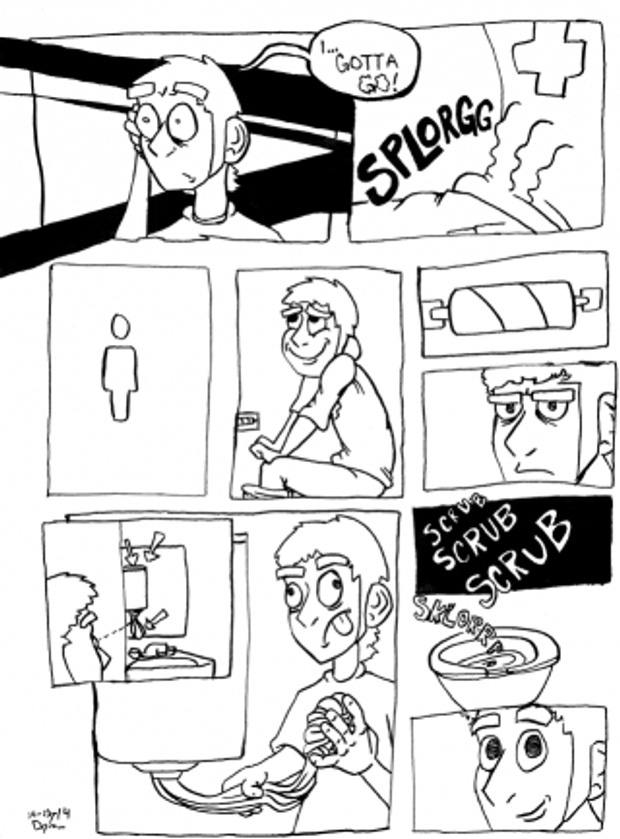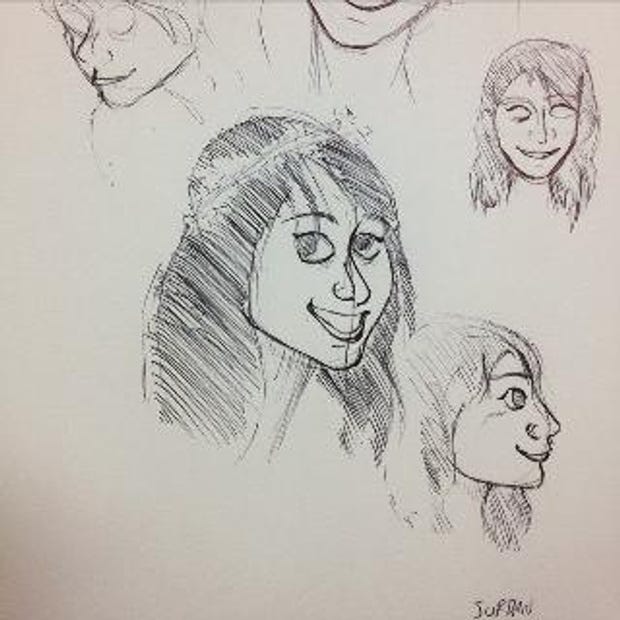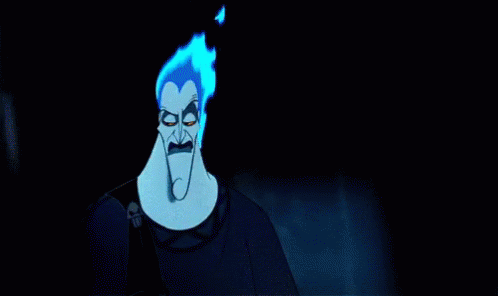I kick a lot of gratitude toward my patrons, the folks who make up the Brimstone Order. I have sixty-nine patrons on Patreon right now and about a third of them are paying members. That’s huge if you think about it. No, I am not raking in five grand a month. No, Patreon is not the sole source of cash for me, but imagine having something like thirty people believe in what you do enough to kick you some money on a monthly basis? That’s a community. That’s what I don’t shut up about!
Last week, I wrote about measuring success. After that entry, a new goblin in the Brimstone Order, Mallory from Inkjoy Creations asked if I would consider writing about Pateron. So, here we are doing at least one post about my journey with Patreon.
As far as I’ve told people, I’m pretty sure I signed up for Patreon in 2013. I know I was pushing my page by spring of 2014 because I was unemployed and trying everything in my power to find pathways toward more creative work. I was so early as a creator on Patreon that my link is Patreon.com/Dylan. I locked down just my first name. It’s been impossible to convince myself to change that, even with Brimstone Studios as my focus and identity these days. Dylan is five letters and Brimstone Studios is sixteen! Back in 2013, no one knew what Patreon was, what it could be, or what it would become.

When I say that no one knew what Patreon was, I don’t just mean that it was new. Kickstarter was booming as a crowdsourcing platform. Kickstarter focuses on products. You pitch a product you want to bring to market like a board game, or a cooler, or herb planters. You promise backers things like credits in the manual, copies of the product, or even exclusive versions of it. The pitfall the Kickstarter model constructed for Patreon creators was this sense that we needed to kick our patrons constant gifts and perks. Easily until 2020, there were numerous Patreon creators mailing out odds and ends to their patrons on a monthly basis. It’s a subscription service, you better get something when you pay!
Creator fatigue in this period was rampant. I met similar fatigue when I first launched into Patreon because my lowest subscription was $1 and I offered to draw all my patrons. I was posting weekly comic pages, and I was drawing folks as fast as I could. I got lucky though. Keeping ten patrons was hard for me. It started fast, with a solid seven folks. I was overwhelmed for a week or two, and then it fell off. My patronage stagnated at $7 a month for about a year. That didn’t do much to fill in the blanks during unemployment.
As Patreon evolved, and creators got a better grasp on how to use it, the product oriented approach tapered off toward a community approach. As the platform added options like payments per post, podcasters and YouTubers took off like mad offering early access. I kept my monthly model and started focusing more on the community aspect. My patronage started to grow. It helped that I needed it more than ever as I started taking more steps from part-time employment gigs toward working freelance entirely. I started talking more about my Patreon and asking more people to join it.

There’s a thirst, especially in America, to figure out what we want in life and then flip a switch and make that thing financially successful overnight. We lack a lot of social safety nets in the US. Homelessness is closer than a lot of us think. Healthcare is phenomenally expensive, and mental wellness is a privilege. However, at the same time we are indoctrinated in an ideal of the American Dream. It isn’t just independently owning land anymore. There’s gold in them hills! There could be ancient treasure in your backyard. Buy a lottery ticket and win your way to safety nets! Join this easy MLM and crawl your way to a car! Flip a switch and get famous! It’s easy. Just as easy as picking yourself up by your bootstraps. In reality, the need and desire to be financially secure, safe, and healthy are pathways for con artists to take advantage of that dream.
Patreon is not a con, though it is riddled with little fees and a lack of general exposure. But it often seems like the switch a creator could flip to find instant success. X YouTuber blew up overnight, so can we. Y actor got famous on their first gig, so can I. If only it were really that simple. Yes, some folks blow up fast. But, in the grand scheme of things, Patreon, community building, and independent financial success is an exercise in perseverance.

I look successful on Patreon because I’ve held in there. At this point, I’ve been a creator on Patreon for twelve years. I’m still not able to sustain myself on Patreon alone, though. The money I make through Patreon, right now, goes directly to my studio fees. None of it feeds me, or pays for events. But, I have a steadily growing community that is invested and deeply important to me. When I get asked about how to start a Patreon, I tell everyone that it’s a community building device and not a product subscription.
The challenging truth is that crowdsourcing platforms, regardless of which one you choose, are not platforms that will promote you or help you find an audience. The most successful creators on these platforms are those who already have a following. If you’re already followed by one hundred thousand people on YouTube, if you’re already selling tickets to performances, if you already have widely received published works, or if you already have people asking to support you. The grassroots, punk rock, approach I have inevitably taken is the hard way.
It is not easy, or necessarily successful, to send messages to all your Facebook friends, or family, and ask them for support. Hell, I plug the Brimstone Order in most of the Fighting the Good Fight newsletters and the conversion rate from reader to patron is less than 1%. It’s just the case for people. We all have subscriptions we manage. We all have limited time and attention. We all have things we want. All things are similar to comic conventions, creatively. People want what they already know and love. Converting people into fans of something new, or members of a new community, is a herculean task.
Growing an audience is the key and that task can seem impossible. Who the hell wants to hear what I have to say? Who in the world wants to see my artwork? For me, I have sixty-nine people who want to see my work and want to hear what I have to say. I couldn’t be more grateful for them. Whoever I recruit next is going to be similar to those folks in some way. The next person to emerge as a goblin in the Brimstone Order is going to have things in common with my other paid members. Maybe they know and like me? Maybe they read Violet 9, or read This Is My Private Life, or even Champions? It’s entirely possible they read this newsletter and want to make sure I have the funds to keep it going. Patrons could be people who want to see me at more events, or want to see more Dylan’s Drink & Draw. New supporters could even be people finding inclusive space in the Brimstone Clubhouse Discord server and want to ensure I keep curating a space for people that create, need to express themselves, need or want friends, and want to stick it to the man.
While we all fight to make something relevant that everyone will love, I’ll keep working towards the grassroots method and keep crawling forward on growing the Brimstone Studios community. When someone asks if they should start a Patreon, I won’t be able to answer that for them. But I know how important perseverance is when building a genuine community. I have the best community ever.
Hope for wild success and prepare for a long, slow journey. Do your best and never lose your voice. That’s my best advice.
Today’s Tune
Today’s entry is brought to you by the Brimstone Order! Go join and feel the warm fuzzies.




